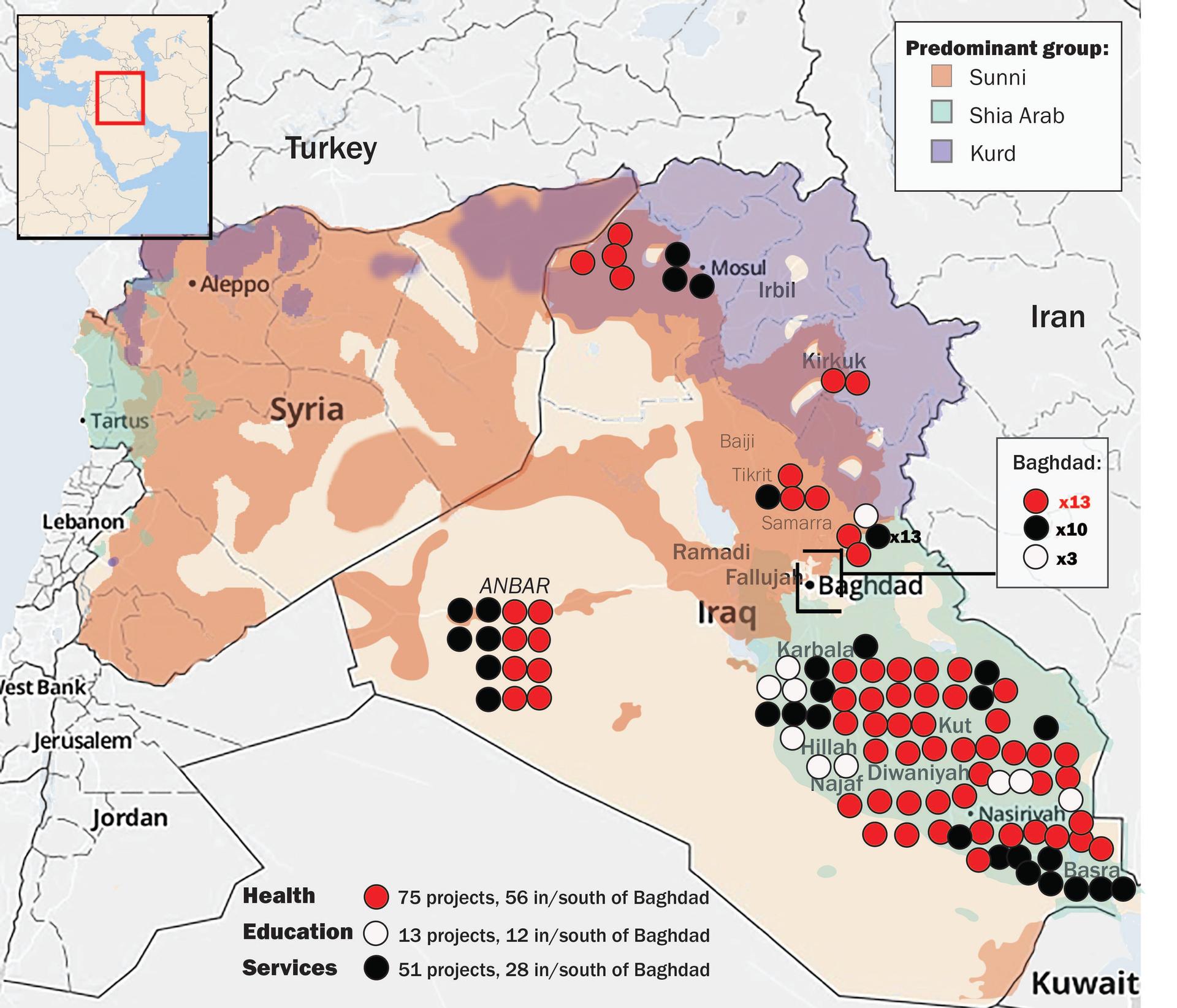These maps show how foreign investment has helped fuel Iraq’s Sunni-Shia divide
Long before ISIS forces crossed into Iraq from Syria, seizing cities across the northern part of the country, a civil crisis was building in northern Iraq.
For the last several years, many Sunnis in the country have resented Shia domination of Iraq’s politics since the US-led invasion that toppled Saddam Hussein in 2003, eventually leading to an empowered Shia majority class at the ballot box and the election of Iraqi Prime Minister Nuri al-Maliki.
Taking to the streets in late 2012, Sunni frustration reached a boil this last year, with vehement accusations that the Iraqi government is discriminating against the Sunni population in northern Iraq, not providing equitable social services and demonstrating blatant discrimination.
These two maps roughly illustrate where USAID and World Bank projects have taken place since Maliki’s election, along with some of the investment opportunities his government offered to foreign donors in 2013.
International Development Projects since Maliki took office in May, 2006
![]()
In the effort to win the “hearts and minds” of Iraqis, two leading international development agencies have spent considerable funding rebuilding Iraq, since 2006. This map begs the question of whether the Sunni community has been disproportionately served.
Source: In some cases, USAID and the World Bank do not disclose the location of a project for security reasons. This map reflects the projects made publicly available through the USAID and World Bank online databases as of June 19, 2014. Ethnic boundaries are drawn based on the work of Dr. M. Izady at Columbia University’s Gulf 2000 project, and the Empirical Studies of Conflict.
Where the Iraqi Gov’t saw Iraqi needs and areas for foreign investment in 2013
![]()
This map reflects calls for funding in three key sectors (health, education, and services) outlined by the 2013 investment map released by the Iraqi National Investment Commission, the face of private investment in Iraq and the Government’s voice of investment needs.
Sources: Iraq National Investment Commission. Ethnic boundaries are drawn based on the work of Dr. M. Izady at Columbia University’s Gulf 2000 project, and the Empirical Studies of Conflict.
